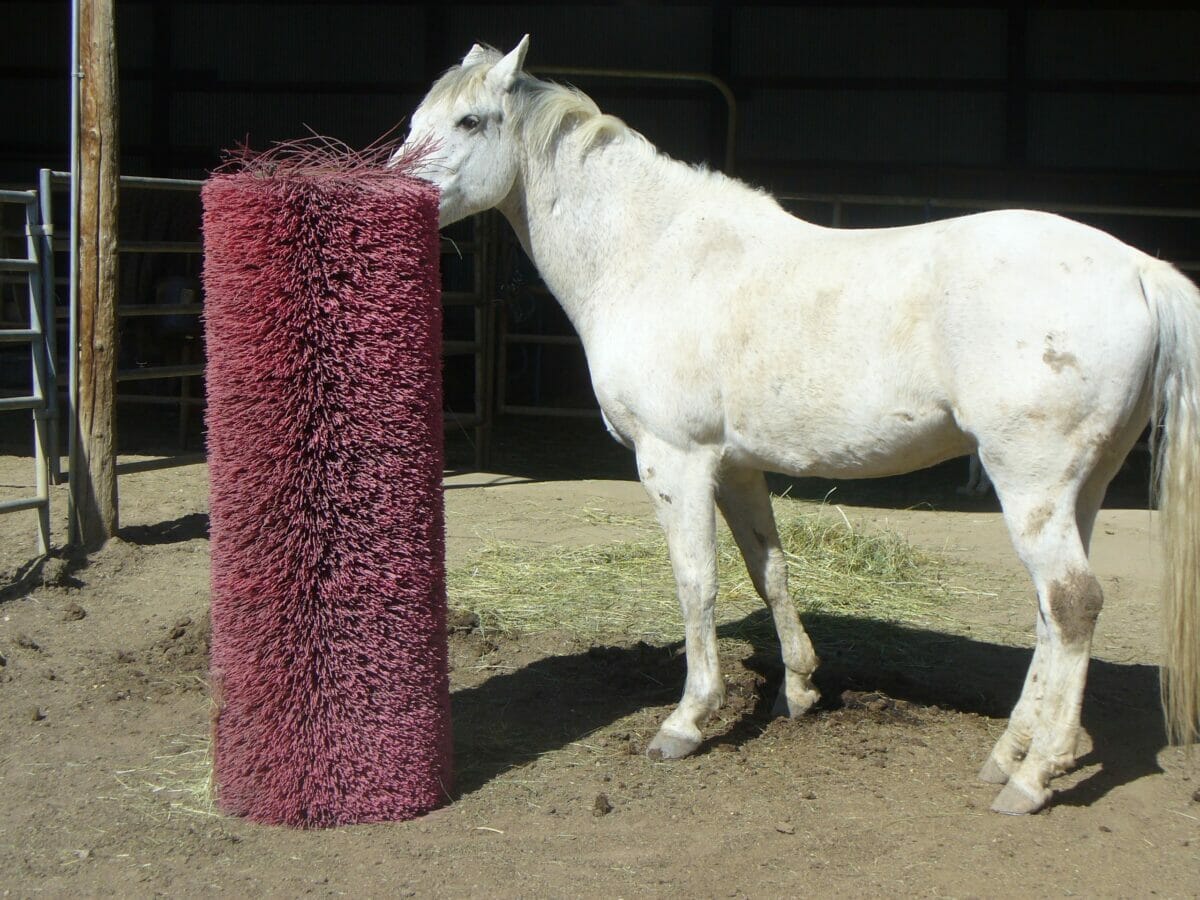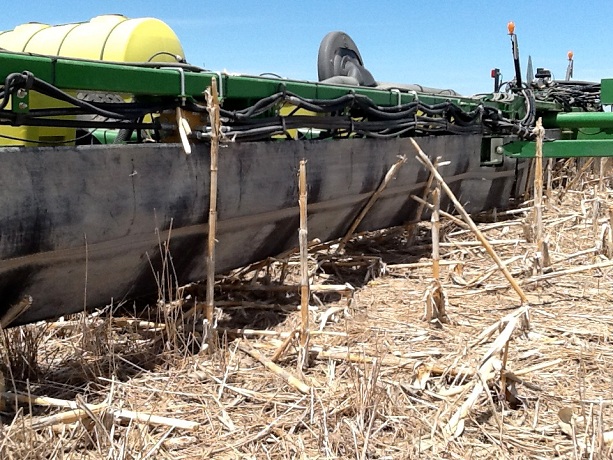Conveyor belting, street sweeper brushes and other discarded materials are getting a second life on farms.

A ranch in Montana is an odd place to find a big, old street sweeper brush, but the bison appear to love it. Yes, we’re talking about those brushes that street sweeper trucks use to push trash around while requiring city dwellers to move their cars. Apparently, after the Department of Sanitation is done with them, sometimes, the brushes get a second life as a bison back scratcher.
“People, city slickers really, think it’s the funniest thing,” says Damon Carson, founder and president of Repurposed Materials. The company, a sort of industrial thrift store, brings in used materials from American industry and resells them for new purposes. It currently has five yard locations—in Arizona, Colorado, Iowa, Texas and South Carolina—where people can come see and purchase the repurposed materials.
Farmers and ranchers are the ultimate innovators, finding all kinds of creative uses for items that would otherwise end up in a landfill—or, sometimes, that already have.
“All the rope I use I get at the dump,” says Abby Barrows, a Stonington, Maine-based oyster farmer and marine scientist researcher. Barrows, who, in her work as a marine scientist, focuses on microplastics in the ocean, has reused various materials since buying the oyster farm in 2015.
RELATED: 3 Ways Farmers are Kicking the Plastic Habit
“It’s been my flavor going into it,” says Barrows, who inherited flotation devices for the oyster bags on her farm made of cedar and housing installation from the previous owner of the oyster farm. She also built an oyster tumbler using wood that she and her husband cut and milled themselves and oversized PVC piping in which they drilled holes.
Despite the ingenuity, Barrows is concerned about the use of plastic gear in aquaculture. Thanks to a grant, she’s now researching, designing and building alternatives to plastic gear and experimenting with metal, cedar, cork and even mycelium.
Of course, not all farmers have easy access to a dump with a lot of old yet still reusable rope from lobstermen, and Carson, who started Repurposed Materials more than a decade ago, sees the business as a conduit for reusing what would otherwise be wasted.

Used billboard makes a great hay cover.
“We look forward to being a resource on any byproducts, waste, inventories or equipment that would be a candidate for repurposing,” says Carson. “Maybe items that have been depreciated out, overorders on a job or inventory from a project that got canceled.”
In addition to those retired street sweeper brushes becoming backscratchers for horses or cattle, the company has seen decommissioned fire hoses get an extended life as a boat dock fender and obsolete ski lift cables become a hand railing in a luxury condo building. One of the most popular items they sell to farmers, though, is old conveyor belting from the mining industry.
“It’s a Swiss Army knife of sorts. There’s all kinds of problems you can solve with a roll of old mine belting on a farm and ranch,” says Carson.

Conveyor belting from the mining industry is repurposed for the farm.
That belting has been used by no-till farmers as a way to keep corn and sunflower stalks from tearing planters. It’s been turned into windbreaks that protect livestock against blowing snow and cold winds and even as slings that go under the belly of dairy cows during hoof trimming.
On Heermance Farm in Tivoli, New York, Kevin Ferry—who grows hundreds of specialty vegetables such as Vietnamese water spinach, lemongrass and Thai ginger for New York City restaurants—uses leftover construction plumbing for OMRI-certified organic grow troughs, turns old kitchen racks into microgreens and seedlings racks and repurposes shipping containers as growing containers and poultry incubators. Shipping containers are probably one of the things most of us have heard of farmers and artisan food producers using, be it for mushrooms or even cheese. Still, it’s just one of many ways farmers and ranchers are solving problems with previously used materials.
Carson, who opened the fifth branch of Repurposed Materials earlier this year and has another one planned for later on in the year, continues to be amazed by all the uses farmers and ranchers find for discarded materials. He’s seen farmers and ranchers use mining truck tires as cattle water tanks, railroad rails as cattle guards, highwater guardrails for horse pens, concrete railroad ties as farm creek crossing and much more.
“Every day we see just how resourceful the ag community is by the used materials they buy from us and then the problems they solve with these used materials,” he says.
If you tend to get stuck in snow, sand or mud, you have options [stay home is not one of them]. You can buy the expensive plastic mats/ramps that don’t store well and break in the cold and warp in the heat. Or you can recycle old snowmobile tracks, which roll up, have cleats on one side, and can handle anything. Two of those will almost always get you out.
Sounds very good. The less wasted, the more saved.